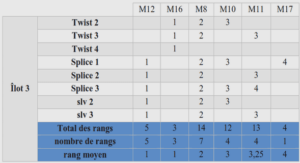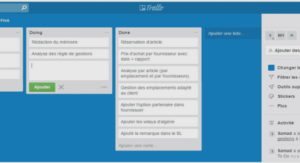Contamination as a missing driver of soil carbon dynamic in land surface models
Land surface models (LSMs) are used within Earth Systems Models since the 70’s to predict climate from physical atmospheric and oceanographic models (Fisher and Koven, 2020). Since years they’ve been recognized as useful and improved by several components such as continental biogeochemical cycle to take into account the large fluxes of carbon (C) (and more recently nitrous N) between soils and atmosphere (Cox et al., 2000; Friedlingstein et al., 2006; Zaehle and Friend, 2010; Vuichard et al., 2018). However, despite improvement during the last decades there is still uncertainties in modeling some of the major processes. For instance, soil C stocks represents 1500 PgC and C fluxes between soils and atmosphere are on the order of 75 PgC year-1 (Schlesinger and Andrews, 2000). Anav et al., (2013) estimates that only 6 over the 15 Earth system models tested correctly reproduce the land carbon sink while looking at the Northern Hemisphere, all models underestimated C sink from 200 to 50 %. Up to now model of soil C fluxes are mostly governed by soil temperature, moisture, clay, the amount of soil organic carbon and the C input to the soil through primary production (Fisher and Koven, 2020; Blyth et al., 2021). Yet, growing anthropisation not only affects greenhouse gases (GHG) emissions but also drastically modifies the soils contamination.
For instance, industrial activities, urban traffic or agriculture can increase the soil concentration of contaminants as heavy metals or pesticides that can in turns affect soil functions (Cao et al., 1984; Bååth, 1989; Steinnes et al., 1997; Yang et al., 2006). Also, the soil contamination is expected to vary during the next decades, largely depending on international or more local policies (Ballabio et al., 2018; Panagos et al., 2018). Thus, if the soil contamination affects soil GHG emission, it is of particular importance to take it into account into LSMs to 1) adjust the scenario of climate change under the current contamination and 2) to take into account the variation due to contamination into GHG emission and climate change when prospecting land use change scenario or defining contamination guidelines. Among land-atmosphere fluxes, soil heterotrophic respiration (Rh) while soil contamination has been found to affect soil’s microbes at the origin of Rh (Giller et al., 1998, 2009; Sereni et al., 2021). The effect of soil Cu on GHG emission is expected to occur through its effects on soil microbes’ respiration. However, it is widely accepted that all total metal content is not biologically available. For instance, free ion activity models argues that only the small amount of Cu in the form of free ion in the soil solution is effectively bio-available and impacting for soil fauna (Parker et al., 2001; Lanno et al., 2004; Thakali et al., 2006; Lofts et al., 2013). Indeed, Cu availability is highly dependent on soils properties such as soil pH, soil organic C, so that available Cu increase at low pH and low organic matter content (McBride et al., 1997).
Moreover, it has been found that Cu input to soils were closely related Thus, we will investigate both the effect of total Cu and the effect of free Cu (considered as bio available) on soil CO2 emissions. However, available databases which could be further easily reused in large scale soil models recorded total Cu because it is easier to measure than free Cu (Tóth et al., 2016; Ballabio et al., 2018). Thus, to derive bioavailable Cu, we used among the numerous empirical existing equations the Tipping et al.’s, (2003) estimation which is the most cited and used a transfer function based on more than 90 observations. Therefore, we will use its equation and the data on soil properties provided by the JRC to estimate free Cu at EU-scale. The aim of our study was to examine whether the errors of continental biogeochemical models in reproducing observation based products of heterotrophic respiration are partially explained by the Cu content. Continental land surface (LSM) biogeochemical models differ in the mechanism they reproduce and the inclusion of environmental variables. Also, the spatial variations of soil Rh are different between models. Models intercomparison is then often used to estimate patterns of models’ residue and improvement required and to distinguish individual misrepresentation from missing first order drivers that need to be better represented (Huntzinger et al., 2017). Thus, we will use models output from the TRENDY database to investigate whether the soil Cu concentration may drive models’ residue. Because large scale observation of Rh fluxes are seldom and rarely direct, we will used two different products of observation with hypothesis that bias of importance were different between both products.



